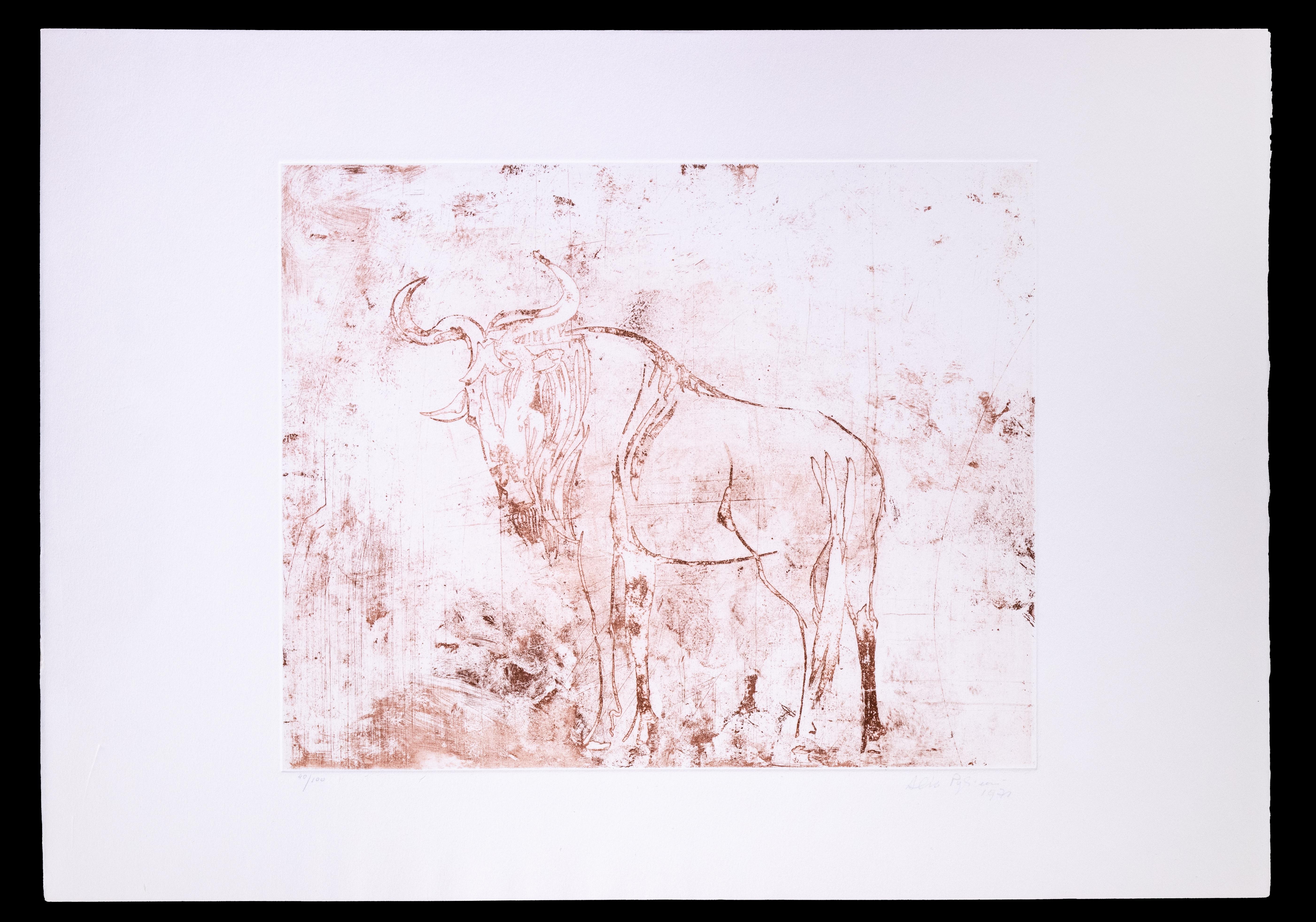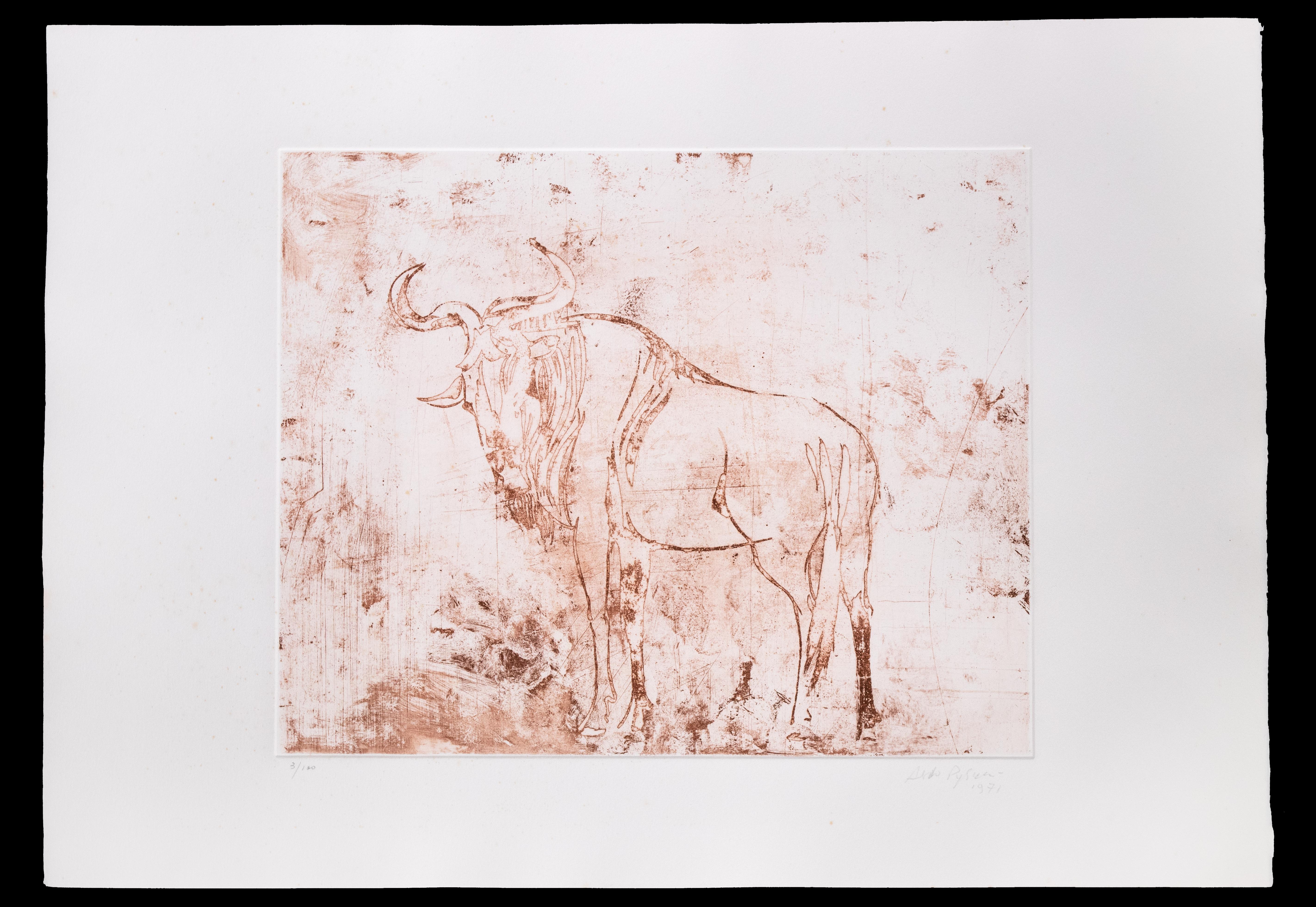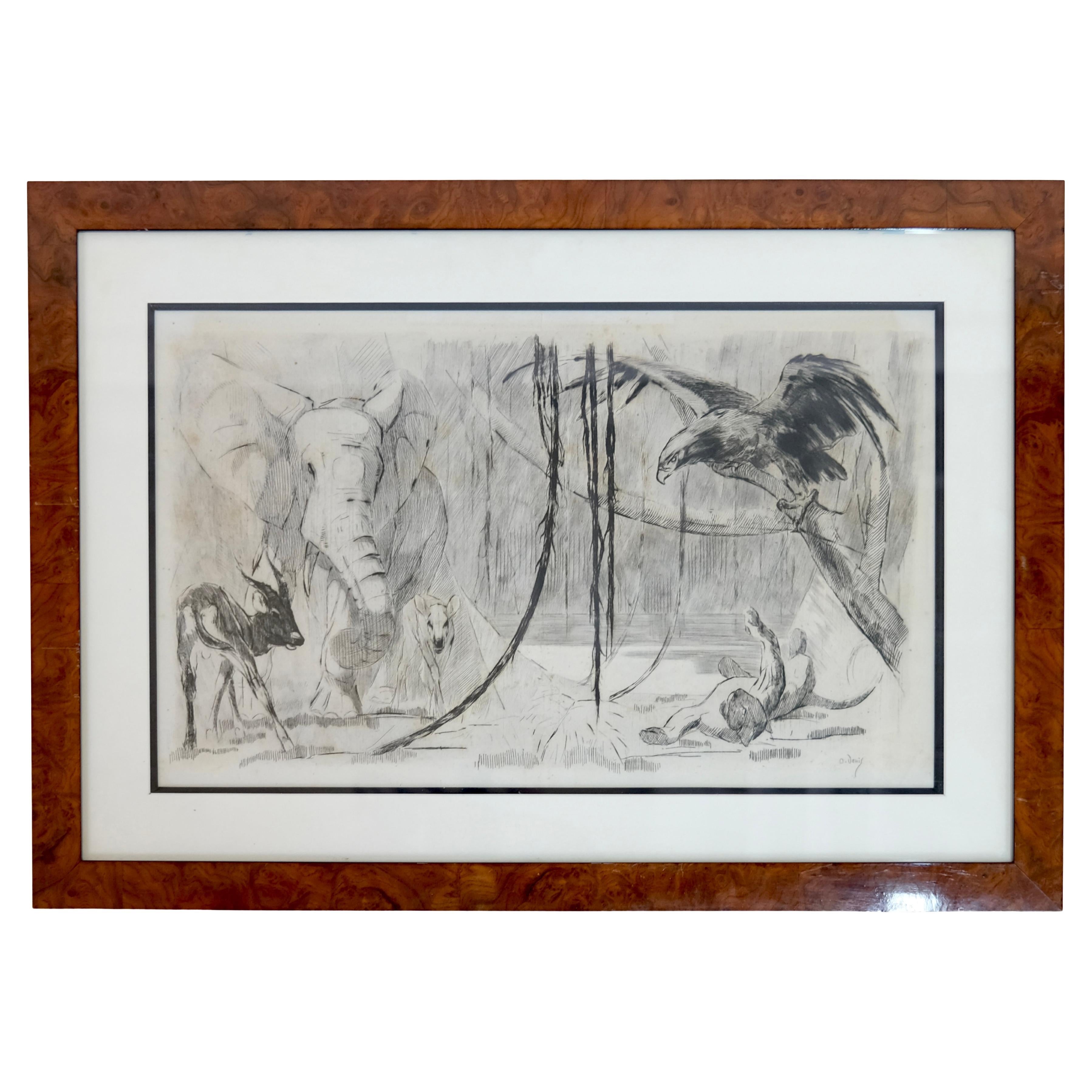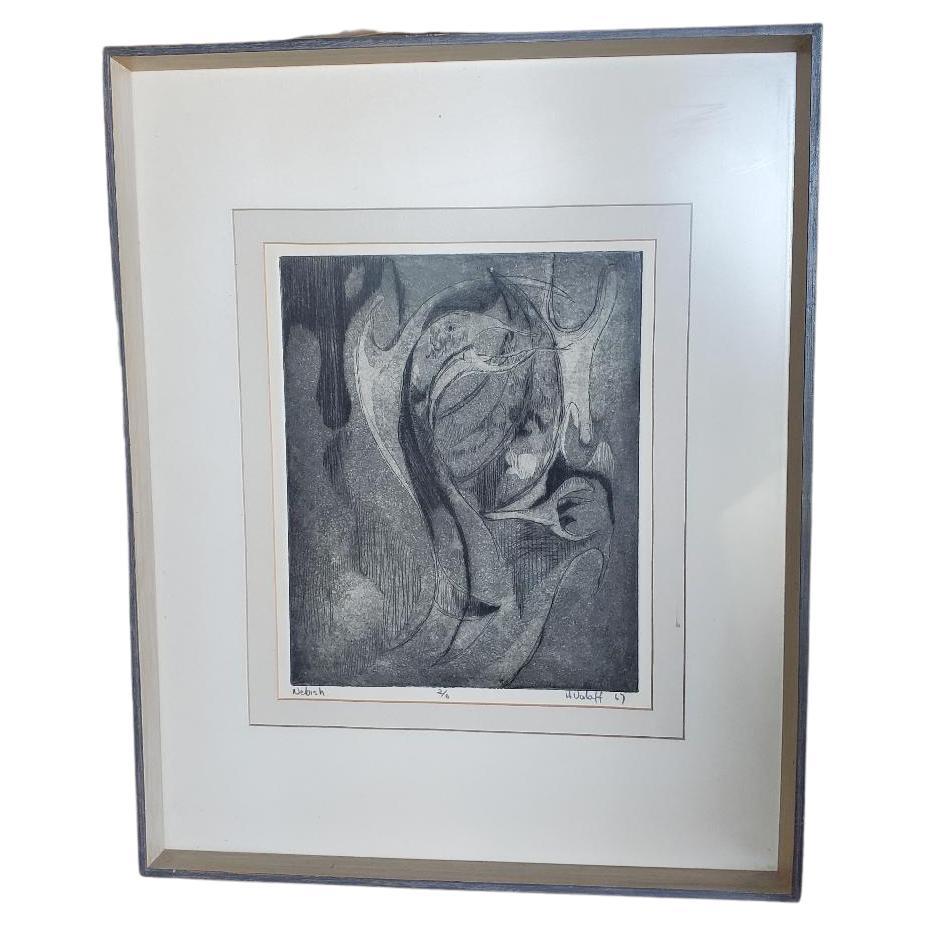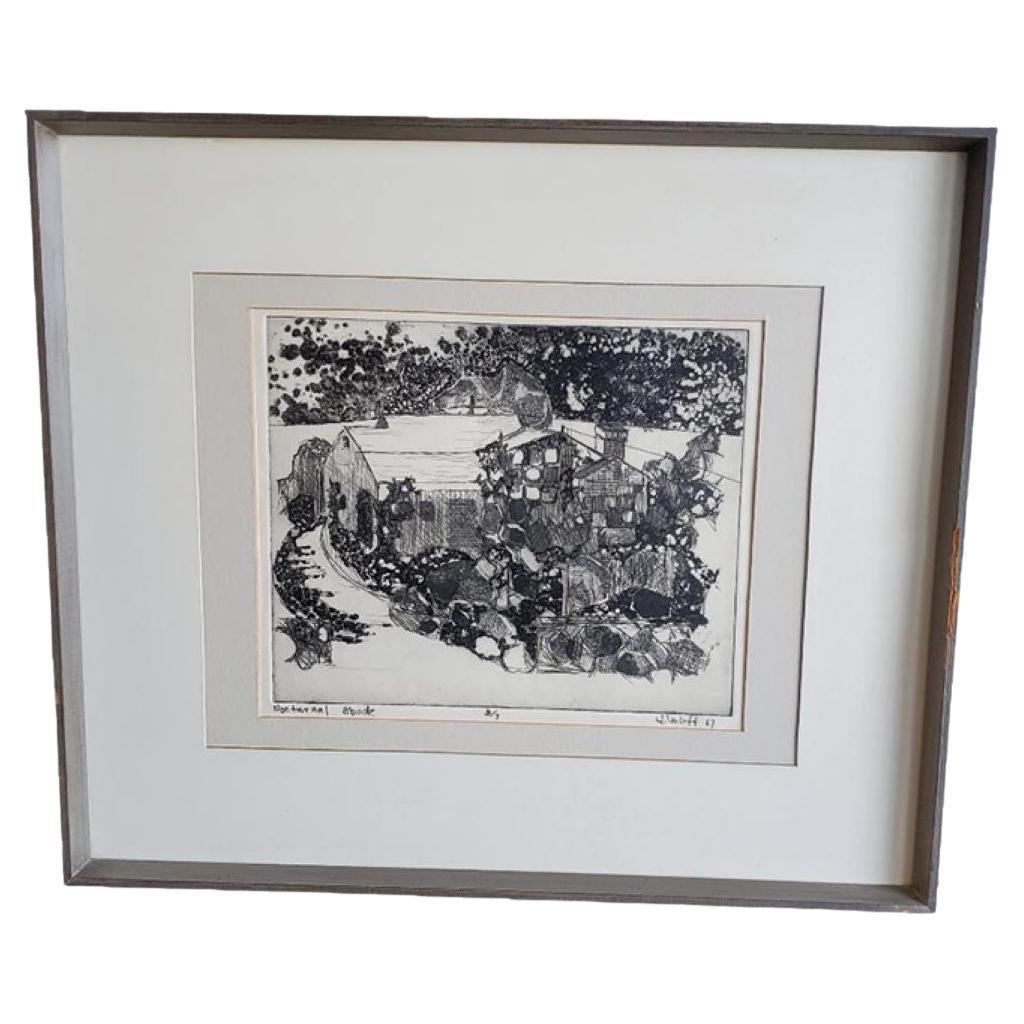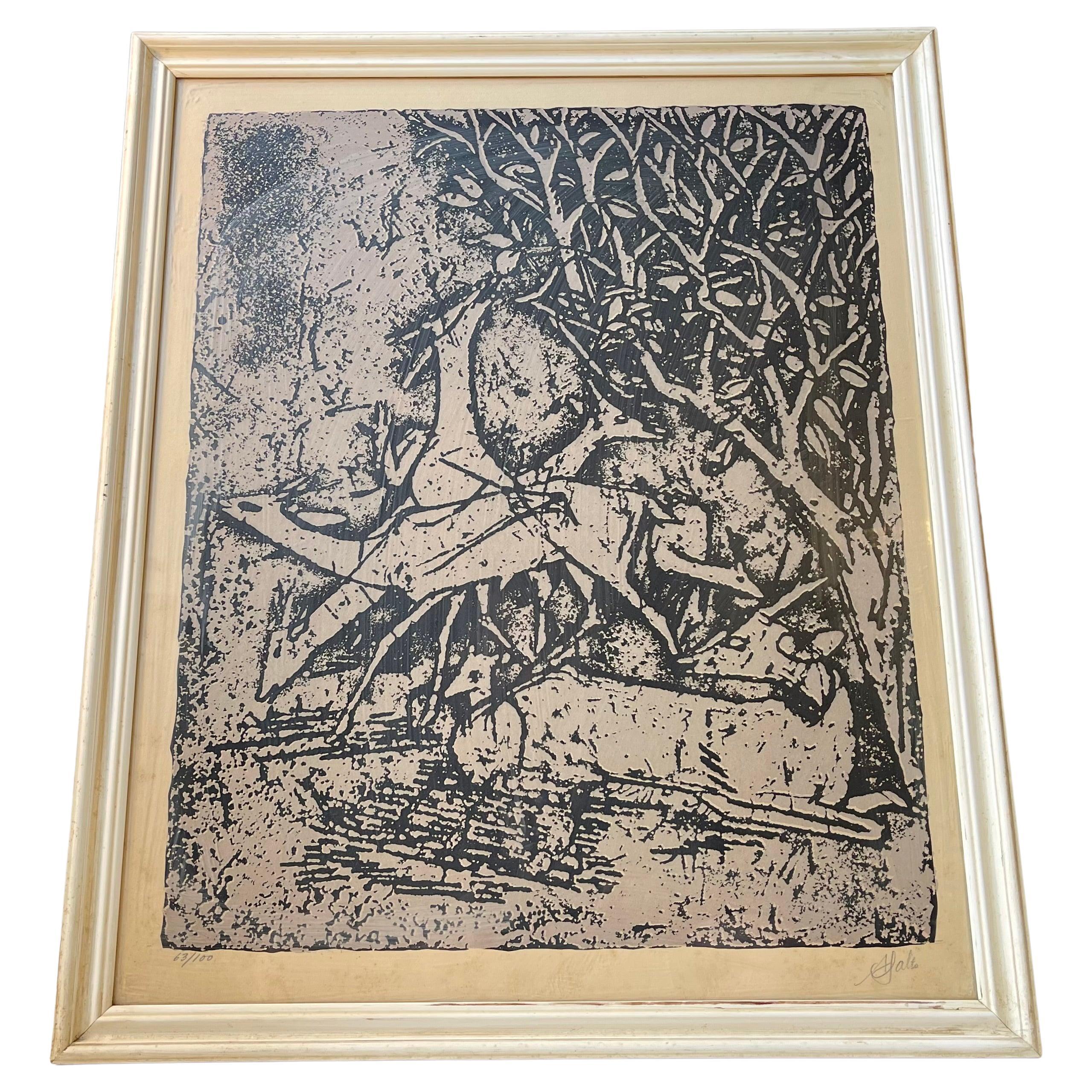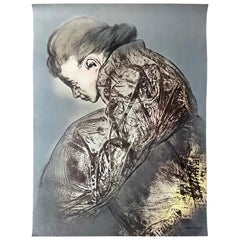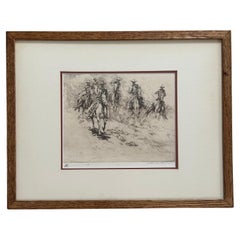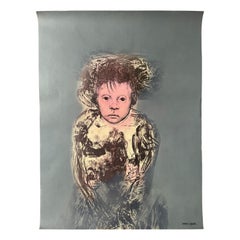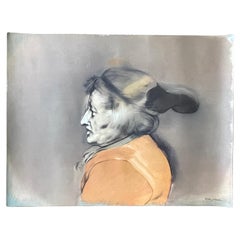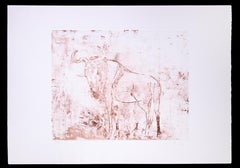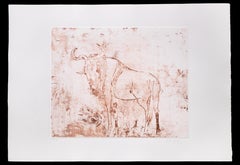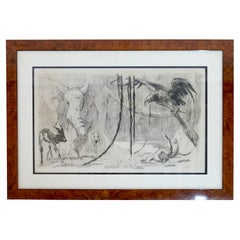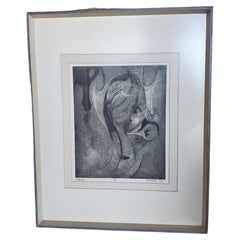Items Similar to Vintage Dry Point Etching "Bison" by Józef Hecht
Want more images or videos?
Request additional images or videos from the seller
1 of 12
Vintage Dry Point Etching "Bison" by Józef Hecht
$675
£502.15
€588.73
CA$944.07
A$1,054.09
CHF 553.07
MX$13,009.28
NOK 6,952.13
SEK 6,504.95
DKK 4,392
Shipping
Retrieving quote...The 1stDibs Promise:
Authenticity Guarantee,
Money-Back Guarantee,
24-Hour Cancellation
About the Item
Vintage dry point etching "Bison" by noted artist Józef Hecht, circa 1930s. The piece is hand signed and titled in pencil by the artist and numbered 18 of 40 in the lower left. The image (plate mark) is 11.5" x 9.25", framed size is 18.5' x 16.25"; presented in a custom black frame, with off white matting. It is in very good vintage condition with some minor scratches to the frame. Really nice piece! #4023
Born in Łódź, Poland, in 1891, Hecht studied at the Art Academy of Kraków from 1909 to 1914. On completion of his studies in Kraków, Hecht visited museums throughout Europe. The outbreak of World War I found him in Berlin. Due to the fact that he had done his studies in the Austrian zone in Poland and thanks to prizes obtained at the Académie des Beaux-Arts, Hecht was given the option of going to neutral Norway, where he lived from 1914 to 1919.
Immediately following the armistice, Hecht traveled to Italy; and two years later to Paris, where he maintained his studio until his death. At this time Hecht became a member of the Salon d'Automne, thereby gaining an entrée into the Parisian art world and a chance to exhibit his work on a regular basis. At his Paris studio, he taught burin-engraving - the classic copper-engraving technique - to many artists, including British surrealist painter and printmaker Stanley William Hayter, South African-born British painter and printmaker Dolf Rieser.
The year 1926 was a turning point in Hecht's career and heralded the most successful period of his life. He published his first suite of six prints, l'Arche de Noë, which included a preface by the French symbolist Gustave Kahn and was exhibited in December that year at the Paris gallery Le nouvel essor. Hecht's future collaborator, mystical narrator André Suarès, wrote a laudatory catalogue article. The images that Hecht developed at this time found renewed vigor in 1928 when Suarès and Hecht collaborated on the folio, Atlas. In Atlas Hecht began to re-combine images and forms he had previously studied—a working method that he refined throughout his life.
In 1927 Hecht's encouragement of Hayter's printmaking activities led to the establishment of Atelier 17, a cooperative printmaking studio, which endures to this day in Paris as Atelier Contrepoint. The "Atelier" influenced artists Pablo Picasso, Marc Chagall, Alberto Giacometti and others.
In 1929 Hecht became a founding member of the group, La Jeune Gravure Contemporaine, which staged annual group shows and was influential in keeping the spirit of printmaking alive. Hecht also associated with members of Les Peintres-Graveurs Indépendants, founded in 1923 by J. E. Laboureur and Raoul Dufy. It is doubtful that Hecht knew each member of these groups, but it is probable that he was familiar with their work and they with his, and that this provided an opportunity for the exchange of techniques, subjects, and ideas. Hecht was an intermediary between the avant-garde artists of Atelier 17 and more traditional printmakers.
Between 1926 and 1938 Hecht's engravings were published in various collections, his work was widely shown, and it gained critical acclaim. Hecht won two gold medals at the 1937 Paris World's Fair.
- Creator:Józef Hecht (Artist)
- Dimensions:Height: 16.25 in (41.28 cm)Width: 18.5 in (46.99 cm)Depth: 1.5 in (3.81 cm)
- Materials and Techniques:
- Place of Origin:
- Period:
- Date of Manufacture:1930s
- Condition:Wear consistent with age and use.
- Seller Location:San Diego, CA
- Reference Number:Seller: #40231stDibs: LU936641963182
About the Seller
4.9
Platinum Seller
Premium sellers with a 4.7+ rating and 24-hour response times
Established in 2000
1stDibs seller since 2012
4,086 sales on 1stDibs
Typical response time: <1 hour
- ShippingRetrieving quote...Shipping from: San Diego, CA
- Return Policy
Authenticity Guarantee
In the unlikely event there’s an issue with an item’s authenticity, contact us within 1 year for a full refund. DetailsMoney-Back Guarantee
If your item is not as described, is damaged in transit, or does not arrive, contact us within 7 days for a full refund. Details24-Hour Cancellation
You have a 24-hour grace period in which to reconsider your purchase, with no questions asked.Vetted Professional Sellers
Our world-class sellers must adhere to strict standards for service and quality, maintaining the integrity of our listings.Price-Match Guarantee
If you find that a seller listed the same item for a lower price elsewhere, we’ll match it.Trusted Global Delivery
Our best-in-class carrier network provides specialized shipping options worldwide, including custom delivery.More From This Seller
View AllOffset Lithograph Drawing from "Portfolio" by Rafael Coronel, 1978
By Rafael Coronel
Located in San Diego, CA
Rafael Coronel
"Portfolio"
1978
Offset lithograph
Printed by: Litografos Unidos, S.A., Mexico
Publisher: Galeria de Arte Misrachi, S.A., Mexico
Paper size: 19" x 24.5"
Unframe...
Category
Mid-20th Century Mexican Prints
Materials
Paper
$300 Sale Price
20% Off
Vintage Dry Point Etching "Going to the Wagon #1" with Doodle by Edward Borein
By Edward Borein
Located in San Diego, CA
Vintage dry point etching "Going to the Wagon, No. 1" with original pencil doodle by noted western artist, Edward Borein, circa early 1900s. The piece is hand signed in pencil by the...
Category
Early 20th Century American Drawings
Materials
Paper
Offset Lithograph Drawing from "Portfolio" by Rafael Coronel, 1978
By Rafael Coronel
Located in San Diego, CA
Rafael Coronel
"Portfolio"
1978
Offset lithograph
Printed by: Litografos Unidos, S.A., Mexico
Publisher: Galeria de Arte Misrachi, S.A., Mexico
Paper size: 19" x 24.5"
Unframe...
Category
Mid-20th Century Mexican Prints
Materials
Paper
$300 Sale Price
20% Off
Offset Lithograph Drawing from "Portfolio" by Rafael Coronel, 1978
By Rafael Coronel
Located in San Diego, CA
Rafael Coronel
"Portfolio"
1978
Offset lithograph
Signed in print
Printed by: Litografos Unidos, S.A., Mexico
Publisher: Galeria de Arte Misrachi, S.A., Mexico
Paper size: 19"...
Category
Mid-20th Century Mexican Prints
Materials
Paper
$300 Sale Price
20% Off
Offset Lithograph Drawing from "Portfolio" by Rafael Coronel, 1978
By Rafael Coronel
Located in San Diego, CA
Rafael Coronel
"Portfolio"
1978
Offset lithograph
Signed in print
Printed by: Litografos Unidos, S.A., Mexico
Publisher: Galeria de Arte Misrachi, S.A., Mexico
Paper size: 24....
Category
Mid-20th Century Mexican Prints
Materials
Paper
$300 Sale Price
20% Off
Offset Lithograph Drawing from "Portfolio" by Rafael Coronel, 1978
By Rafael Coronel
Located in San Diego, CA
Rafael Coronel
"Portfolio"
1978
Offset lithograph
Signed in print
Printed by: Litografos Unidos, S.A., Mexico
Publisher: Galeria de Arte Misrachi, S.A., Mexico
Paper size: 19"...
Category
Mid-20th Century Mexican Prints
Materials
Paper
$300 Sale Price
20% Off
You May Also Like
Buffalo - Original Etching by Aldo Pagliacci - 1971
By Aldo Pagliacci
Located in Roma, IT
Hand signed, dated and numbered. Edition of 100 prints.
Very good conditions.
Category
1970s Contemporary Animal Prints
Materials
Etching
$241 Sale Price
25% Off
Buffalo - Original Etching on Paper by Aldo Pagliacci - 1971
By Aldo Pagliacci
Located in Roma, IT
Buffalo is a wonderful brown burnt sienna ink linoleum original print on paper, realized in 1971 by the Italian master Aldo Pagliacci (1913-1991).
Hand-signed, dated and numbered in...
Category
1970s Contemporary Animal Prints
Materials
Etching
$241 Sale Price
25% Off
Les Animaux d'Afrique, Etching and Drypoint by Odette Denis
Located in Ulm, DE
"Les lions et lionnes à la rivière" (Lions at the river)
Etching and drypoint
by Odette Denis, signed
framed (41x47 cm)
Category
Mid-20th Century French Mid-Century Modern Prints
Materials
Glass, Wood, Paper
$849 Sale Price
20% Off
1967 Original Etching Title Date Signed Numbered "Nebish" #2 of 6 Valoff Artist
Located in Monrovia, CA
Vintage 1967 Original Etching Titled, Dated, Signed And Numbered "Nebish" 2 of 6 H. Valoff 1967.
1967 Original Etching by Artist H. Valoff Is Framed And Ready To Hang.
Nebish Is ...
Category
Mid-20th Century American Mid-Century Modern Paintings
Materials
Glass, Wood, Paper
1967 Etching Titled, Dated, Signed "Nocturnal Abode" #3/7 by Artist H Valoff
Located in Monrovia, CA
Vintage 1967 original etching named signed and numbered "Nocturnal Abode" #3/7 H. Valoff 1967.
1967 Original etching by Artist H. Valoff Is Framed And Ready To Hang.
Nocturnal Ab...
Category
Mid-20th Century American Drawings
Materials
Paper
Axel Salto Lithographic Woodcut of Deer, Signed in Pencil
By Axel Salto
Located in Esbjerg, DK
Large Axel Salto woodcut/lithograph. Typical Salto depiction of wild deer in a grey/black composition. This is number 63 of af limited run of 100 pieces made during the late 1930s or...
Category
Vintage 1930s Danish Mid-Century Modern Prints
Materials
Paper
$1,312 Sale Price
20% Off
